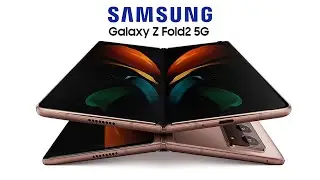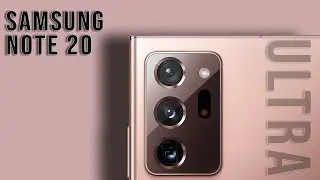SAMSUNG Note 20 | THE GALAXY NOTE 20 ULTRA IS SAMSUNG’S NEW SPEC KING
SamsungSamsung has officially announced 2020’s Galaxy Note lineup. There are two models this year: the regular Galaxy Note 20 and the high-end Galaxy Note 20 Ultra. Both feature the main thing that differentiates the Note line — an included S Pen stylus — but the new Notes are more different from each other than you might expect.
As it did with the Galaxy S20 earlier this year, Samsung is explicitly trying to make the “Ultra” moniker push the top-tier specs ever higher, which apparently allows the regular model to skimp on a few features. It’s a tale of two Notes.
The regular Galaxy Note 20 lacks important features like a high refresh rate screen, microSD storage expansion, and periscope zoom lens, but that doesn’t mean it isn’t expensive. It’s $999.99 for a model with 128GB of storage and 8GB of RAM.
The Note 20 Ultra, meanwhile, has everything Samsung knows how to throw at a phone (short of a folding screen) and the price to match those specs: $1,299.99 for the 128GB storage / 12GB RAM model and $1,449.99 to bump that storage up to 512GB.
Preorders for both begin at 12:01AM ET on August 6th, and the phones should be shipping and in carrier stores (the ones that are open, anyway) on August 21st.
Both phones do share some key specs. The one you’re most likely to be told about (because it’s what carriers are pushing) is their support for both types of 5G networks. Samsung has improved latency on the S Pen and added a few more ways you can wave it about to control your phone remotely. They support fast charging, wireless charging, and reverse wireless charging. And Samsung is also using the brand new version of Gorilla Glass that’s supposedly more resistant to scratches.
They’ve got stereo speakers with some Dolby technology, IP68 water resistance, and ship with Android 10. Both can record video at 8K (which seems like overkill for a phone) and support external microphone options. Dex now works wirelessly (via Miracast) and both phones have some important new Microsoft software tie-ins.
Both still feature Bixby, at best the fourth-place digital assistant behind Google, Alexa, and even Siri.
The Note 20s also have a new kind of finish, which Samsung calls “Mystic.” It amounts to a textured finish on the glass that should hopefully do a better job of repelling — or at least hiding — fingerprints. The Note 20 Ultra will come in bronze, black, and white. The Note 20 will come in bronze, gray, and green.
The Galaxy Note 20 Ultra is very large, as you’d expect from a Note.
The Galaxy Note 20 Ultra is very large, as you’d expect from a Note.
SAMSUNG GALAXY NOTE 20 ULTRA HARDWARE AND SPECS
TheThe Note 20 Ultra has two big jobs. The first is to fill the slot of Samsung’s highest tier, zero-compromise phone. It needs to be the phone with the highest specs that Samsung can use to say it is second to no other Android manufacturer. The second job is to correct some of the mistakes of the Galaxy S20 Ultra.
Simply as an object, the Note 20 Ultra is as imposing as a phone can be — which is a good thing, as that really is the Note’s aesthetic. It’s big and square, with a screen that’s curved (for better or worse) around the sides to minimize the visibility of bezels. It is as close to all-screen on the front as you can reasonably get, interrupted only by a small hole punch and even smaller top and bottom bezels. The camera bump is unabashedly, unapologetically massive.
The Note 20 Ultra supports an adaptive high-refresh rate screen, the regular Note 20 does not.
The Note 20 Ultra supports an adaptive high refresh rate screen; the regular Note 20 does not.
On a spec level, Samsung does get to claim to be at the very top of the Android heap — at least for the time being. It has a massive 6.9-inch 1440p OLED display capable of refreshing at 120Hz. It has three cameras on the back, one of which is 108 megapixels, while another includes a periscope. It has the Qualcomm Snapdragon 865 Plus processor and 12GB of RAM, plus the ability to expand its base storage with an SD card. The battery is 4,500mAh and it supports both flavors of 5G.
So flagship specs for the Android world are a check — though it should be said that Apple’s A13 Bionic processor from last year is still faster than anything Qualcomm is putting out.
The Note 20 Ultra adds dynamically adjusting refresh rates for the screen to preserve battery life, but it can’t hit that full rate at its max resolution (also presumably to preserve battery life). Samsung also tossed in an Ultra Wideband (UWB) radio to make it easier for phones to transfer files by pointing them at each other and — eventually — to support unlocking cars. The iPhone 11 Pro has UWB, so it seems like Samsung couldn’t stand not hitting that spec checkbox, too, even though the software isn’t quite ready.









![Apple iPhone 12 Event Under 5 Minutes [HomePod Mini, iPhone 12 & 12 Mini, iPhone 12 Pro &12 Pro Max]](https://images.mixrolikus.cc/video/4E4YWiGa4WA)
![Apple iPhone 12 Pro & iPhone 12 Pro Max - 2020 [$999]](https://images.mixrolikus.cc/video/3J4mA5QD2YU)
![Apple iPhone 12 - 2020 AD [$699]](https://images.mixrolikus.cc/video/U1_bqUDmFdI)
![Apple Home Pod Mini Only at $99 [AD]](https://images.mixrolikus.cc/video/0ahNemE7-yc)




![[LEAKED AD] Sony WH-1000XM4 Official Leaked Ad Video |](https://images.mixrolikus.cc/video/merRzRF7hww)
![[Hyperlapse] Solar Eclipse 21June 2020: The Ring of Fire Annular Solar Eclipse](https://images.mixrolikus.cc/video/orglYzwSozE)
![Apple AR Glasses Release Date, Price & Specs Rumours [Fan Made Renders]](https://images.mixrolikus.cc/video/CRinTJAFk9k)